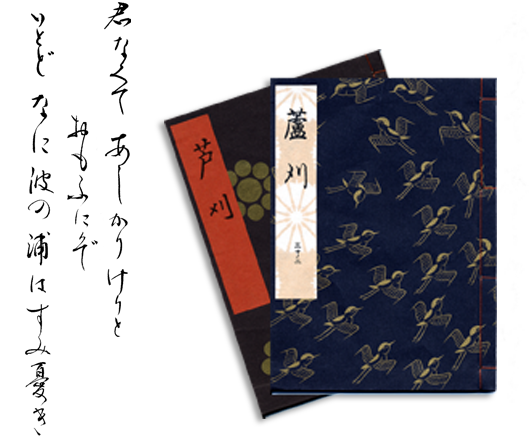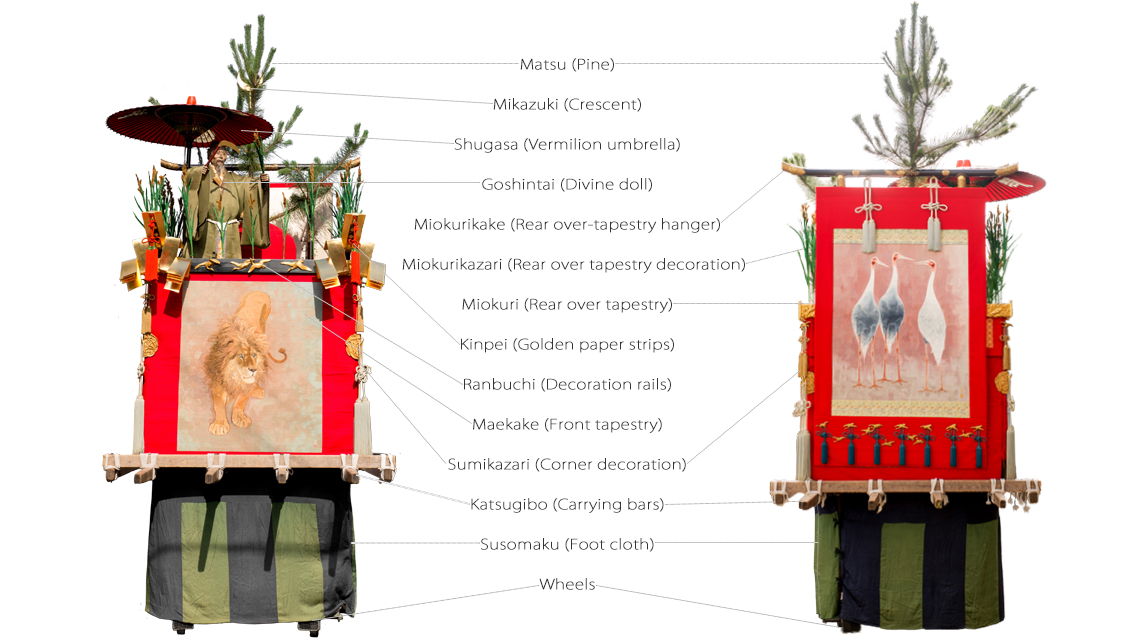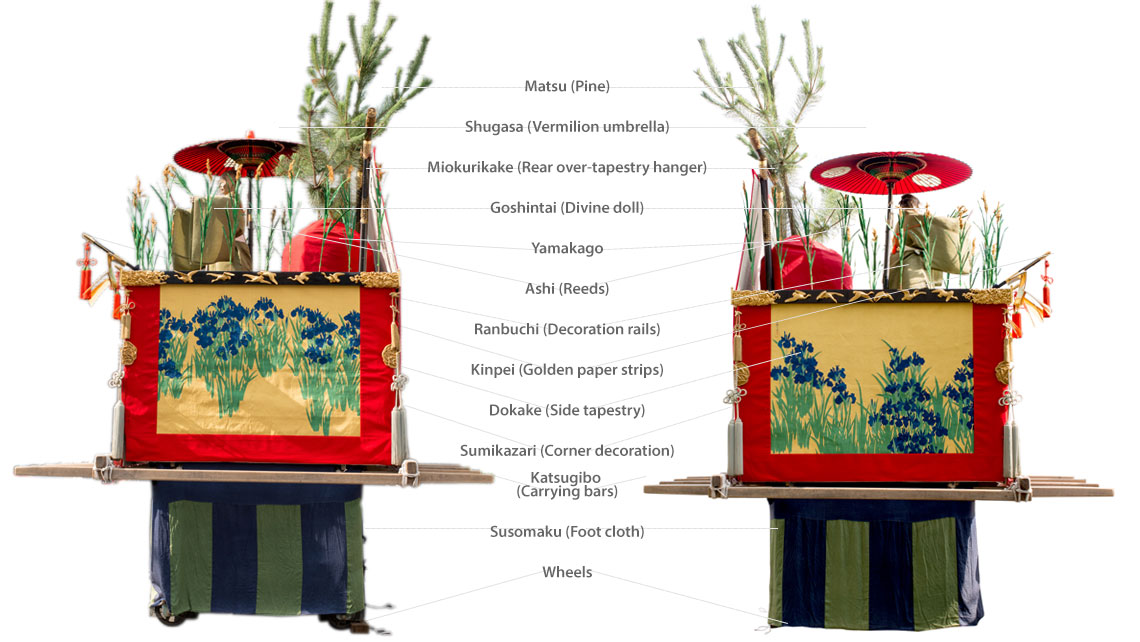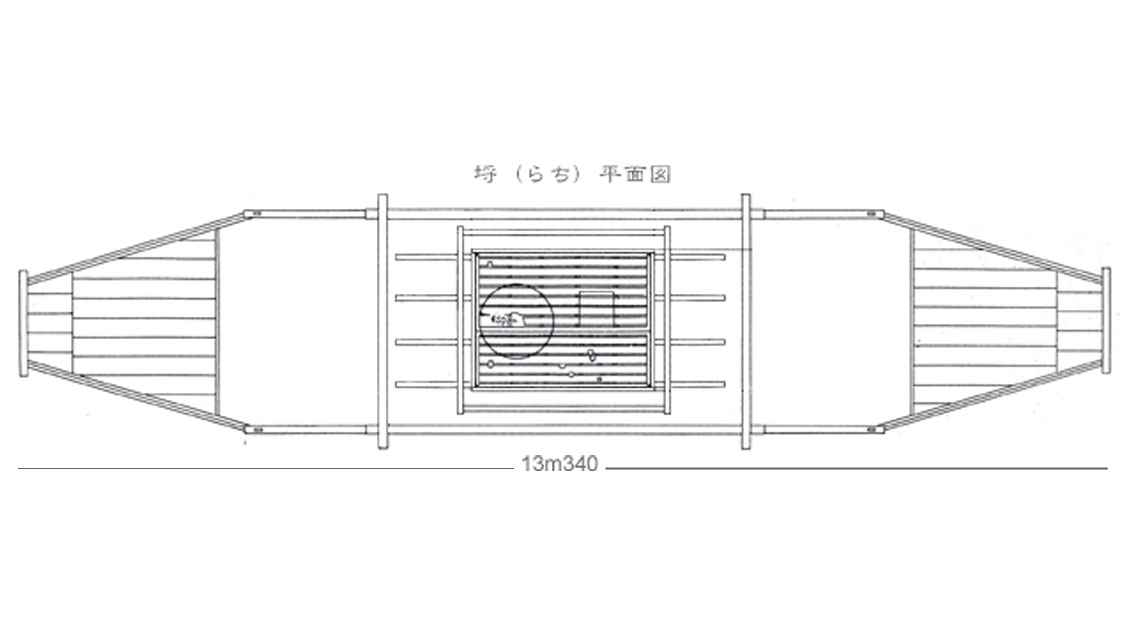Kyoto is the root of Japan, and Gion Matsuri is the bloom of Kyoto.
Ashikari-yama is an inconspicuous but graceful float of Gion Matsuri
Three years have passed since I moved into the Ashikari-yama town, and I have always indulged myself in the mythic history of Kyoto, which spans over a millennium. The unique atmosphere here dazzles me so much that I sometimes feel as if the globe was turning around Ashikari-yama.
Yamaori Tetsuo
A resident of Ashikari-yama(2003)
Source of Ashikari-yama
History of the Float
- Before the Onin War (1467 - 1477)
- In the long history of Gion Matsuri that spans over more than a millennium, the first reference to floats appears some seven centuries ago, in the Muromachi period. Gion Hon-en-roku reports that Ashikaga Yoshinori, the 6th Shogun of the Ashikaga government, resumed Gion Matsuri in 1441 after a cessation, as well as restored some floats and initiated others. Gion Sha-ki counts 60 yama and hoko in the pre-Onin period. Sha-ki also tells us that a float called Sumiyoshi-yama, which no longer exists, used to be headquartered in the present Ashikari-yama area. According to another passage, there were “Ashikari-yama” in three locations [1] at Inokuma-dori and Shijo-dori; 2] between Karasuma-dori and Muromachi-dori, along Nishiki-koji; and 3]at Higashinotoin-dori and Nishiki-koji], which host no floats any more. From the section titled “Restoration after the Onin War(1467 - 1477),” it is presumed that the present Ashikari-yama float was restored by 1496, along with many other floats.
- Restoration after the Onin War
- From the section titled “Restoration after the Onin War,” it is presumed that the present Ashikari-yama float was restored by 1496, along with many other floats. The first procession order draw was recorded in 1500, when Ashikari-yama was the 23rd float to go in the nearest festival procession. In that year, 27 floats participated in the festival out of 37 restored.
Structure of the Float
Size of the Ashikari-yama float
Length: 4.04 m Height: approx. 5 m Width: 2.3 m Weight: approx. 0.64 tonsTexts concerning Ashikari
- Noh Play “Ashikari”
- The Noh play "Ashikari" is reportedly based on Yamato Monoigatari, a verse drama from the Heian period. The basic story is that a wife, who had parted with her husband due to poverty and moved to Kyoto to find a job as a nurse, later meets her ex-husband, who had become a laborer to cut reed, and gives him a kimono. In Yamato Monogatari, however, the wife sadly leaves the man again, as she had been remarried to a nobleman. All other classics featuring the Ashikari story are also categorized as tragedies, with the only one exception of a happy ending: the Noh play "Ashikari." "Ashikari" as a Noh drama is classified as a kyoran-mono (dramas depicting crazed men or women), and is the unique piece among nearly 200 Noh plays that features and praises the love of a married couple. The husband in the Noh play is described as a young man, while the Divine Doll of Ashikari-yama float assumes the figure of an old man. Another difference for unknown reasons between the two is that the drama is set in a spring, in contrast with the Ashikari-yama float with an autumnal appearance. At the same time, the term "Ashikari" is designated as a word for autumn in poetic tradition.
- Yamato Monogatiari
-
Section 148, "Ashikari"; circa 951
Believed to be the source of Noh play, "Ashikari," though the woman gets remarried to a nobleman in Kyoto, and leaves the ex-husband again after meeting, giving him her kimono as a token. - Shui Waka-shu
-
Volume 9, Miscellaneous; circa 1005 - 1007
A digested version of Yamato Monogatari - Konjaku Monogatari-shu
-
Volume 30, Story 5; "A wife leaves a poor husband and remarries to a nobleman"
The husband's fall is explained as a punishment to what he did in the previous life. His miserable days as a reed-cutter are described realistically. - Hobutsu Shu
-
Volume 3
The story of Ashikari (a digested version of Yamato Monogatari) is referred to as an instance of "Gufutoku Ku," or the agony of lacking what one desires (one of the eight major agonies in Buddhism).
- Genpei Josui-ki
-
Volume 36, "A poor couple in Naniwa"
The husband expels his wife, who was so charitable that gave away what little thing they had. The husband's consequent fall leads him to the labor as a reed-cutter. - Shinto Shu
-
Volume 7, Section 43; "About Ashikari Myojin"
The woman meets her ex-husband as a reed-cutter after getting remarried to a nobleman. The two dives into the sea and become Ashikari Myojin, or the gods of Naniwa. - TANIZAKI JUN'ICHIRO, 'ASHIKARI'
- Contained in "Yoshino-kuzu and Ashikari", Iwanami Bunko The novel quotes the song of Ashikari (see: Story of Ashikari), but has no direct relationship with the original Ashikari.
- KAIONJI CHOGORO, 'ASHIKARI'
- Contained in "O-cho", Kadokawa Bunko A modern novelization based on Konjaku Monogatari-shu, combining the story of Ashikari with another tale of a major bandit.
- SUGIMOTO SONOKO, 'ASHIKARI-no Uta'
-
Contained in "Konjaku Monogatari Fantasia", Kodansha Bunko
An awkward court musician fell in love with a maidservant, and borrowed money to buy her out and marry her. He was then suspected of stealing a musical instrument, and was expelled from the music office. In the midst of poverty, the wife found a job at the residence of the chief councilor of state. The subsequent story is the same as in Yamato Monogatari and Konjaku Monogatari-shu.
Illustrations of Ashikari-yama
Historically, many famous drawings have depicted the scene of float procession at the Gion Matsuri festival. Although several major floats often appear in these illustrations, Ashikari-yama is seldom found among them. We hereby present all of the Ashikari-yama pictures that have been identified so far. Unfortunately, another artwork reportedly depicting Ashikari-yama, which is believed to have been at the Shoren-in temple in Awata, has been missing and unidentified.
-
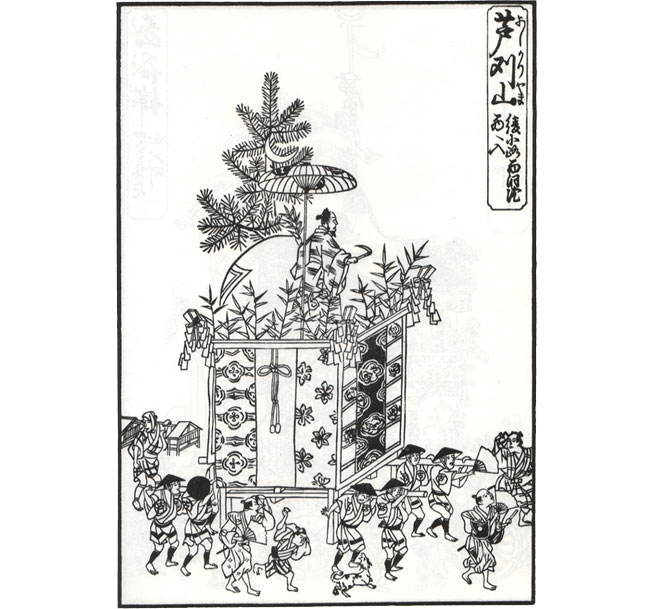
Gion Goryo-e Saiki
1756 -
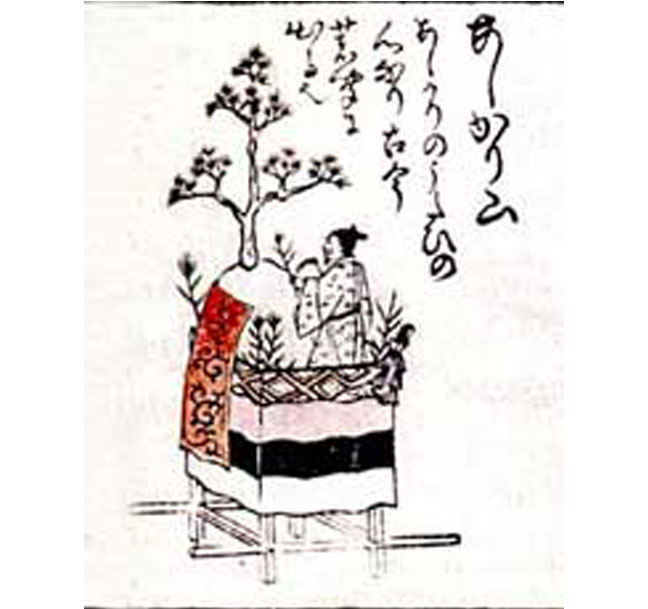
A picture scroll
Owned by Bukkyo University -
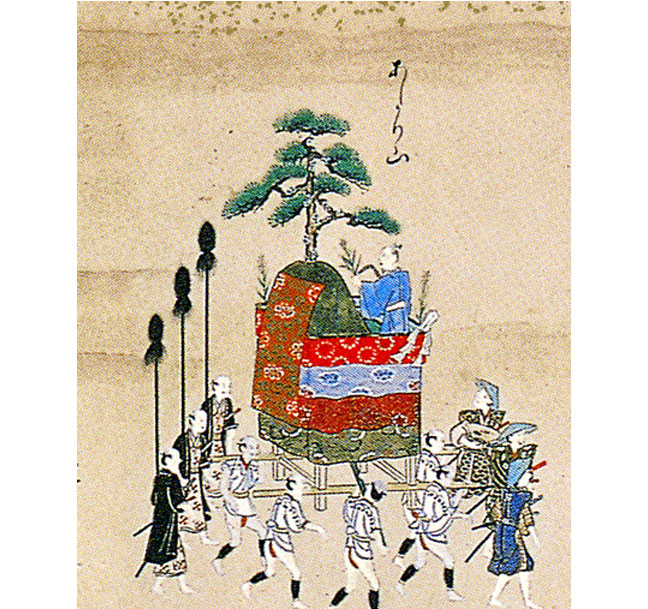
A picture scroll from early Edo period
-
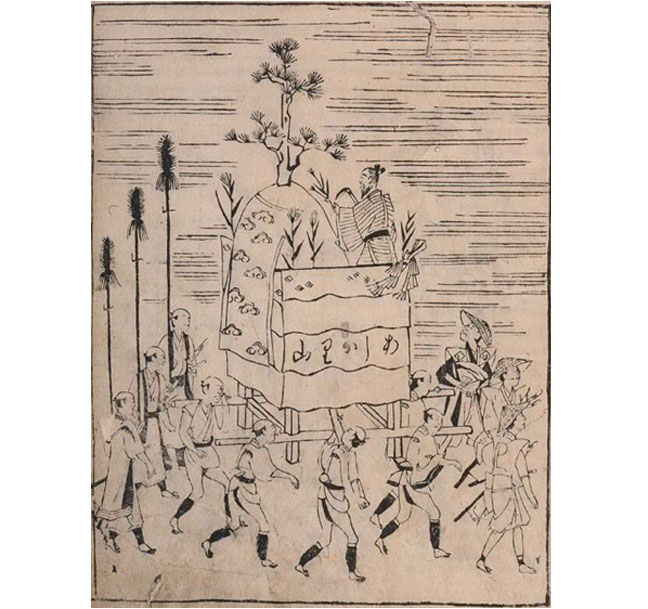
Gion-no Go-hon-ji
Owned by Kyoto General Library -
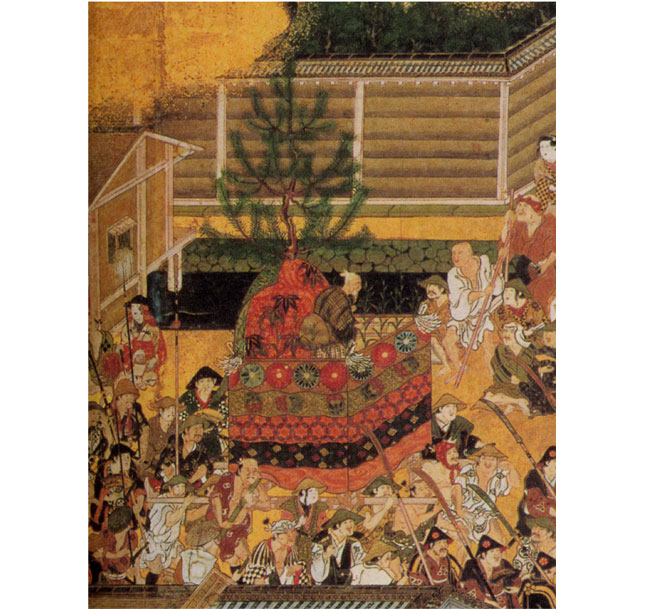
A screen picture from early Edo period "Gion Sairei-zu Byobu"
Owned by Suntory Museum of Art -
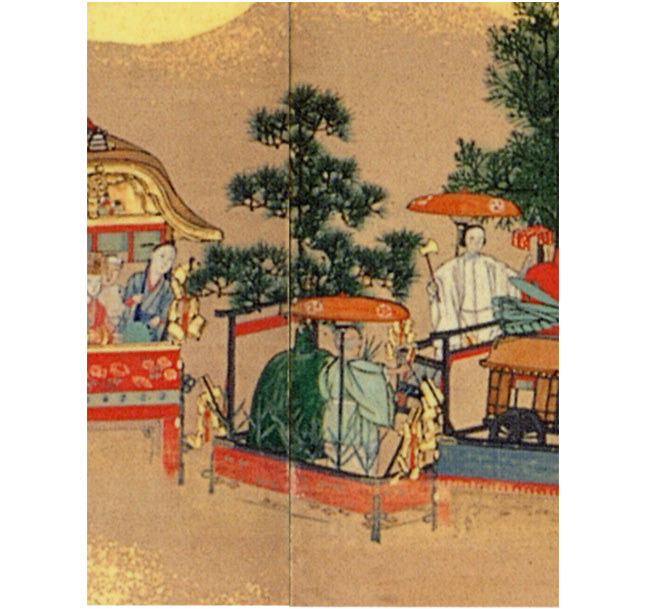
A screen picture from late Edo period
-
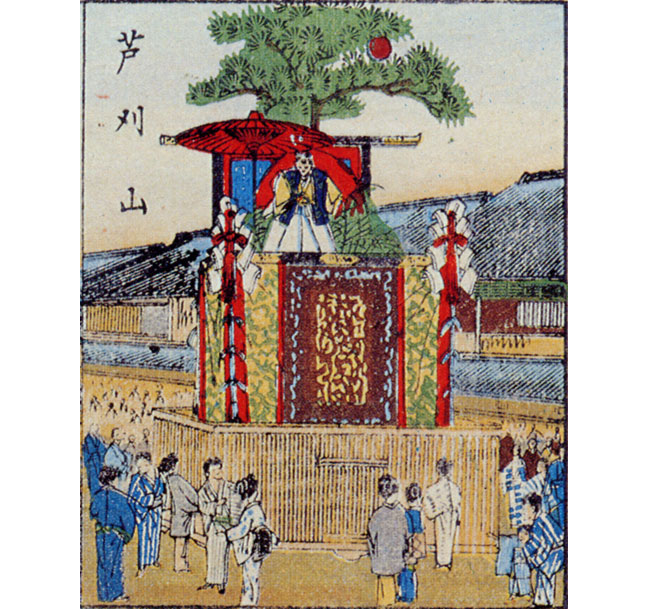
Kyoto Gion-e Ezu
A COLOR PRINT FROM MEIJI ERA -
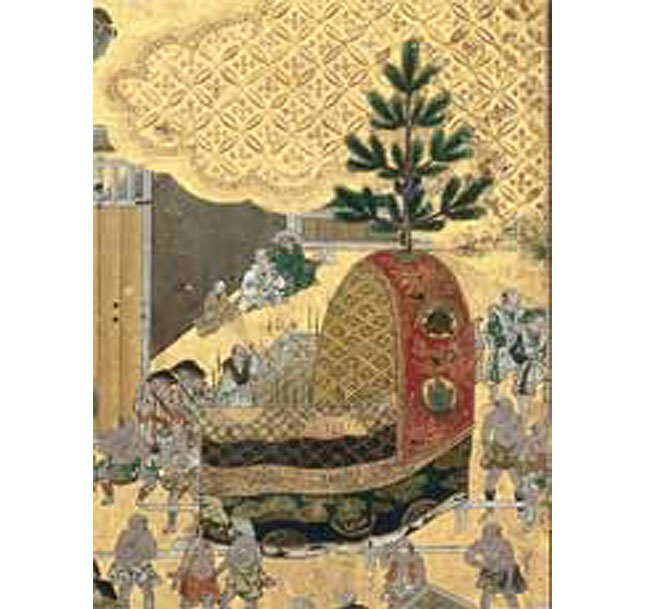
Kyoto Gion-e Ezu
Owned by KYOTO PREFECTURAL LIBRARY AND ARCHIVES -
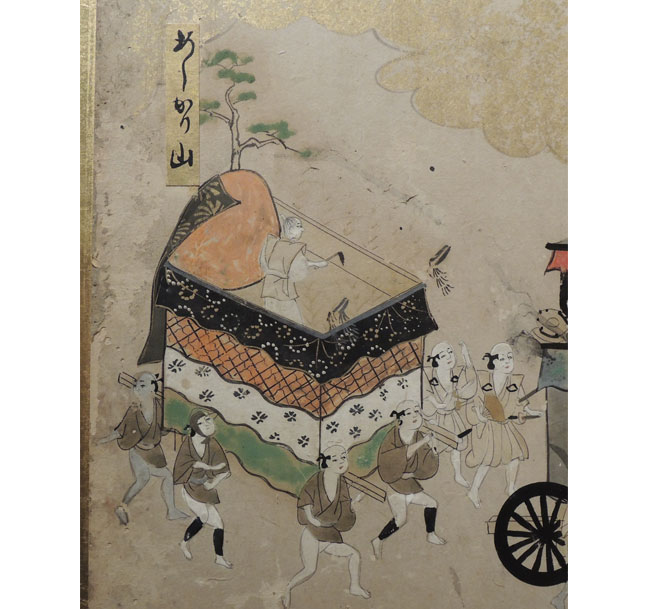
A SCREEN PICTURE DEPICTING A GION FLOAT
(GALLERY TESSAI-DO) -
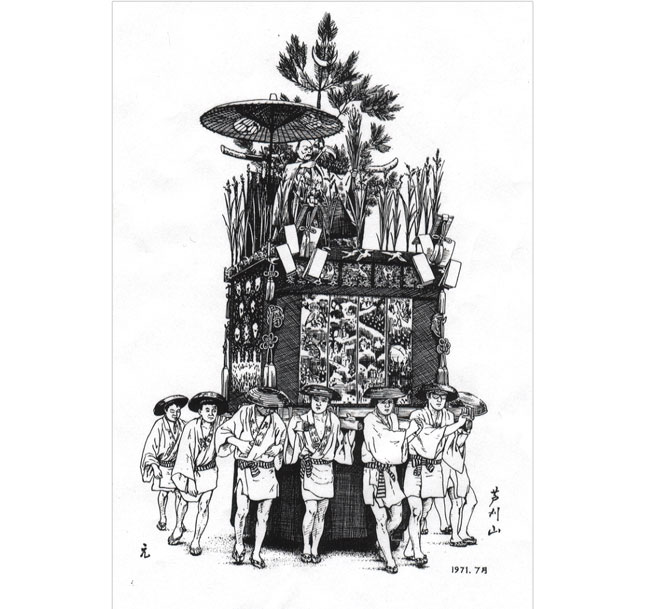
ILLUSTRATION BY MATSUDA HAJIME
